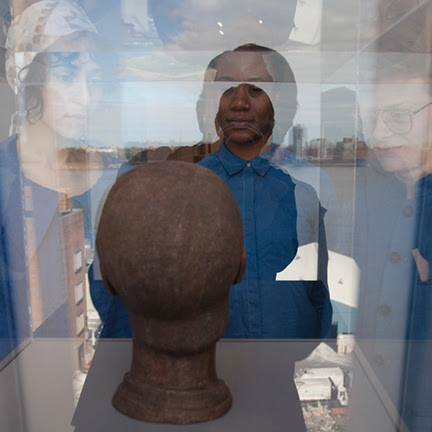Faculty Andrea Geyer’s Installation & Performance at The Whitney Museum of American Art

TIME TENDERNESS
May 13-18, 2015
3pm-6pm
The Whitney Museum of American Art
Free with Museum admission.In Time Tenderness, a program of performances that will take place in the Museum’s galleries from May 13 to 18, artist Andrea Geyer works with performers Omagbitse Omagbemi, Lily Gold, and Jess Barbagallo to reanimate the continuously forgotten history of women’s roles in American culture. On the occasion of the inauguration of the Whitney’s new building, Geyer’s project seeks to materialize Gertrude Vanderbilt Whitney’s visionary belief that any country needs culture and art to recognize and foster its own identity. Geyer has researched various sources, including the writings of Mrs. Whitney, to create a work in which the performers use movement, text, and song to engage with individual works in the exhibition America is Hard to See. Focusing on the legacy of Mrs. Whitney and Juliana Force, the Museum’s first director, who together fostered a community of artists that became the foundation of the Whitney Museum, Geyer asks visitors to recognize the museum not only as a place for looking at art, but as a site in which meaning is actively and continuously created. The project emerges from Geyer’s enduring commitment to recognizing and recovering the transformative role of women in championing modern art and in building the institutions that have sustained it in the United States.

IT’S TIME, SHE SAID
May 1-10, 2015
The Whitney Museum of American Art
Floor Three, Laurie M. Tisch Education Center, Hearst ArtspaceOver the course of the past year, Andrea Geyer conducted research on the history of the Whitney Museum, particularly the work and lives of its founder Gertrude Vanderbilt Whitney and Juliana Force, the Museum’s first director. On the large chalkboards at the center of this installation, Geyer maps the Whitney’s history through their activities. She also charts their connections to other women artists, patrons, and activists who helped to create and nurture the development of modern art in the United States in the early twentieth century. Drawn in reverse, the information in these diagrams is only legible in reflection, in the large mirror.It’s time, she said also highlights the role of education within the context of the Museum. By inserting a theatrical stage into a classroom, Geyer emphasizes the performative aspects of pedagogy. Her approach is inspired by Bertolt Brecht’s Lehrstücke, or learning plays—a radical and experimental form of theater that explored the possibility of learning through performance—and the stage designs of Caspar Neher, who developed innovative and flexible spatial arrangements for Brecht’s productions. Education Programs take place within and through this transformed space.
